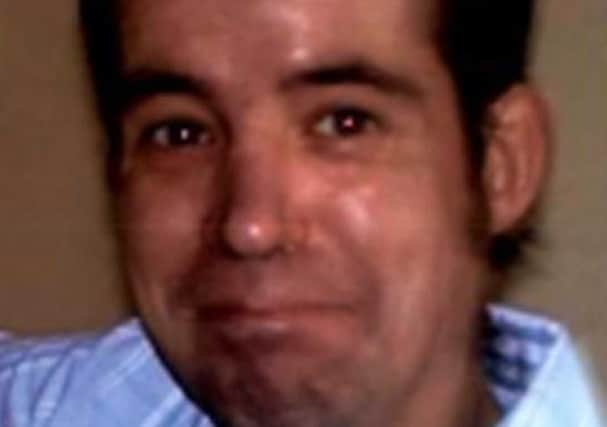Murder victim weighed just 7.5 stone '“ and had 54 injuries


Deputy State Pathologist Dr Alistair Bentley told the jury at Belfast Crown Court the 40-year-old victim died as a result of “blunt force trauma to the chest and head as a result of kicking, stamping and punching”.
Stephen Thomas Hughes (29) and Shaunean Boyle (25) are jointly charged with Mr Creaney’s murder over two years ago at a house in Craigavon and blame each other for the attack.
Advertisement
Advertisement
The trial heard earlier this week that Mr Creaney was subjected to a “deliberate and frenzied attack” and then “unceremoniously dumped” in a green wheelie bin which was found on Saturday, July 5, 2014, at Moyraverty Court in Craigavon where Hughes lived.
Dr Bentley, who carried out the post mortem on Mr Creaney’s remains, told the jury of six women and five men that there were 25 separate injuries to the chest and breast bone.
As he listed each of the injuries individually, Shaunean Boyle appeared physically upset as she sat in the dock flanked by prison guards.
One of the injuries, a large purple bruise, which was up to nine inches in diameter, was found on the front of the chest “overlying the bruised bone which was caused by blunt trauma or forceful kneeling”.
Advertisement
Advertisement
He said: “The breast bone, or sternum, was effectively broken which would have needed a considerable degree of force.”
In relation to the 29 head and neck injuries, the pathologist said that these were made of up grazes, lacerations, incisions and bruises.
During his autopsy, he noted the victim had sustained bruising to the front, side, and back of the head, a tear to the inside of his mouth which was caused by a tooth following a blow to the face.
There was also injuries to the inside of his left ear, his right nostril, upper lip, eye lid and he had a black eye.
Advertisement
Advertisement
Dr Bentley told the murder trial that some of the injuries “showed very little reaction and they appeared to suggest that they might have occurred after death”.
Trial judge Mr Justice Treacy heard that as well the injuries to his head, Mr Creaney sustained eight broken ribs to his left side and seven broken ribs to his right side.
There was also an injury on the right side of the lung which measured one foot in diameter.
As well as the 54 head, neck and chest injuries, Mr Creaney also sustained five injuries to his left arm and ten separate injuries to his right arm. There was also a number of injuries his legs, which Dr Bentley explained could have been the result of falling.
Advertisement
Advertisement
The pathologist said the brain was found to have a “subdural hematoma, a small blood clot, sitting on the membrane space between the brain and the skull”.
He said: “The surface of the brain on both sides showed reddening”.
There was slight bruising around the heart as a well a “small tear of the heart”.
The victim also sustained a small amount of bruising around his kidney and other parts of his abdomen.
Advertisement
Advertisement
As well as bleeding under the surface of the brain, which was not life threatening but would have caused a “significant headache”, the court heard that “many of the nerve fibres had snapped” – something caused by the rotation of the head.
Dr Bentley explained that the head was “rotating from one side to another causing the nerves to snap and causing some loss of consciousness”.
“If the brain is not functioning well, it affects your breathing,” said Dr Bentley.
“If your breathing is not functioning it affects your reflexes.
Advertisement
Advertisement
“Your breathing would be severely restricted due to chest injuries and multiple rib fractures.
“Also rib fractures are very sore and you tend to develop shallow breathing.
“That together with a head injury would further impair your ability to breathe.”
The deputy state pathologist was asked by prosecution counsel Liam McCollum QC if he could estimate how long Mr Creaney had survived after the attack before he had died.
“I considered a survival time of two to three days.
Advertisement
Advertisement
“I gave the cause of death as blunt force trauma to the chest and head.”
Asked by Shaunean Boyle’s defence counsel John Kearney QC if all the injuries were inflicted by kicking, stamping and punching, Dr Bentley replied: “I would say they could be but I can’t exclude a blunt weapon for some of the injuries.”
Dr Bentley confirmed to the defence counsel that Mr Creaney, who weighed seven and a half stone and was 5ft 6in tall, had cirrhosis of the liver caused by “excessive alcohol consumption over a long period of time”.
Under re-examination Mr McCollum QC for the prosecution, Dr Bentley was asked if the fractured ribs could have been caused after death.
Advertisement
Advertisement
The pathologist told the court: “No. They didn’t occur after death.
“They showed early signs of healing as ribs don’t heal after death.
“Also a broken bone, such as a rib, doesn’t bleed as heavily after death,” he added.
Both Hughes – whose address was given as HMP Maghaberry and Boyle, from Edenderry Park, Banbridge, Co Down – were remanded back into custody.
At hearing.